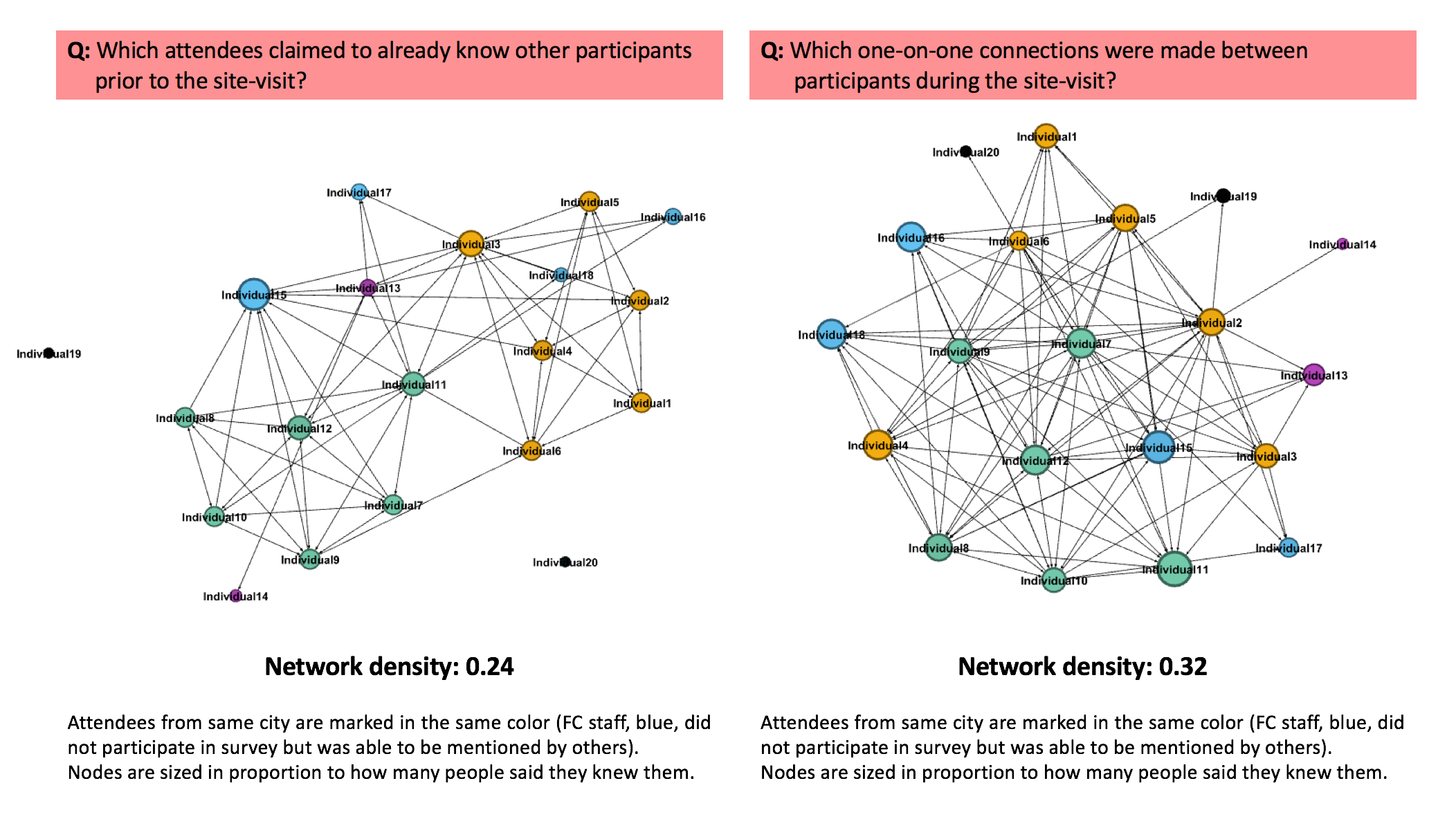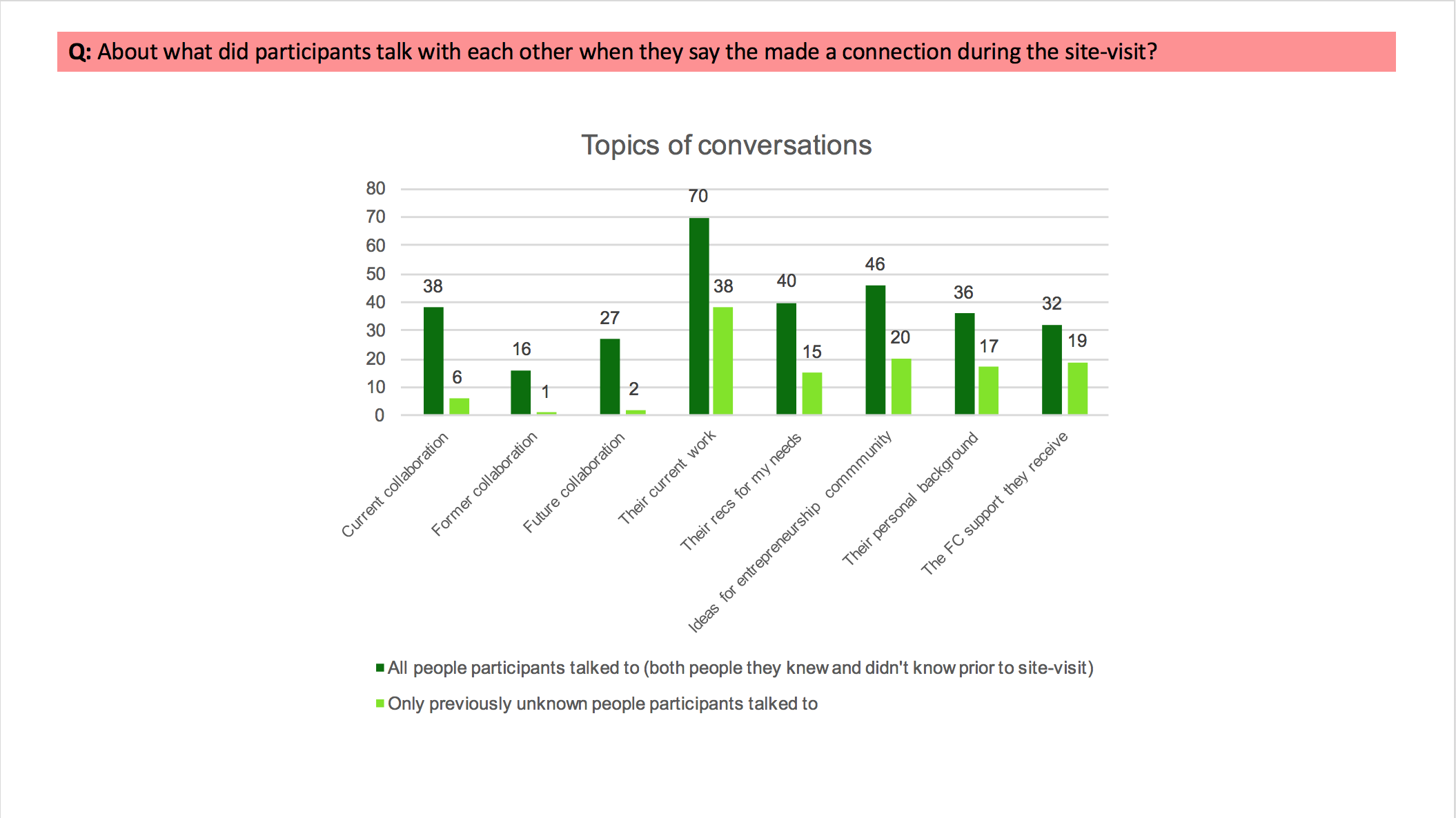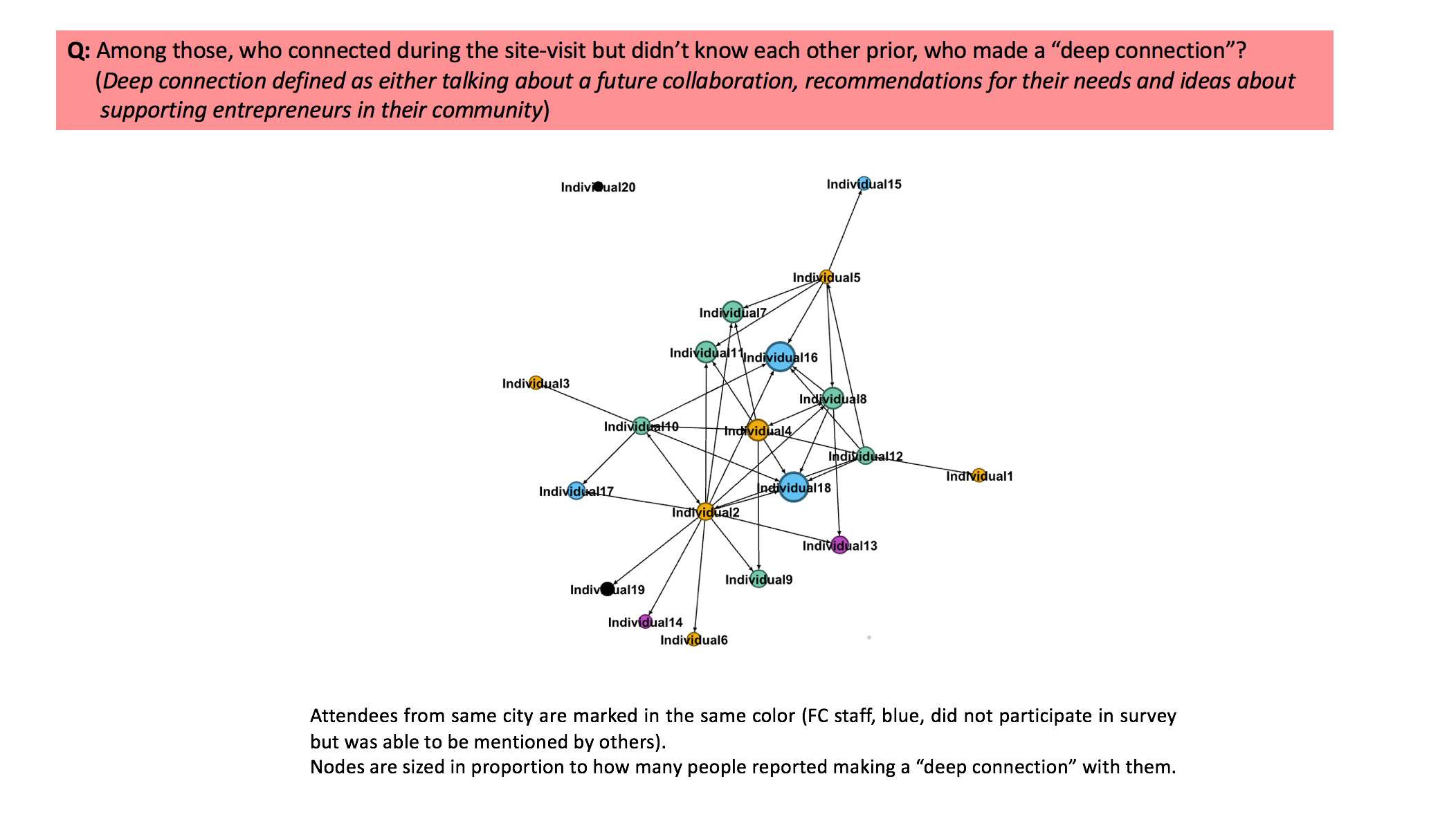If there is one key takeaway from “Expanding Our Entrepreneurial Imagination in Indianapolis” was that the showcase was jam-packed with programming, tours and conversations. Participants from four different cities hit the roads of two neighborhoods in Indianapolis, one of Forward Cities’ Community Entrepreneurship Accelerator cities, each advancing entrepreneurial opportunity on their own paths. Nonetheless, our Research team asked the participants to go out of their way and take an additional three surveys over the course of the two days, because we saw an opportunity to set a new standard about how we can capture the impact of city visits like these. Kudos to the twenty, who stuck with us through all the questions of the pre and post-event surveys; you hold the record for the highest response rate of any of our survey instruments ever launched.
Our Research team has been brooding for a while about how we can measure the novelty, quality, and longevity of connections that participants of trips like these establish among one another.
Our goal: let us test and quantify the previously largely unchallenged notion that bringing ecosystem-building practitioners from across the country together in one community, while creating spaces for knowledge exchange and learning, will result in participants in fact making professionally-relevant connections. The cherry on the top of the hypothesis under scrutiny is that participants actually return to their home communities with practical ideas for strengthening their own work inspired not only by the work they saw on the ground but also by conversations had with other attendees.

At the same time, when we begin to tease out in a bit more detail which topics the above depicted conversations covered (more than one choice possible per conversation) we notice that existing relationships began to solidify during the two days. For example, of the twenty-seven conversations touching the topic of future collaborations between participants all but two happened between people who reported they already knew each other prior to the trip. Notably, however, significant value also springs from new relationships. When it comes to novel ideas sparked by conversations or recommendations made by fellow participants about how to tackle a challenge in somebody’s local ecosystem, new connections are almost equally likely as existing connections to surface either.

The data we collected proved that the community showcase passed the high bar on all counts.
We mapped the existing relationships (ties) between participants (nodes) from the four city cohorts (each colored differently, Forward Cities staff in light blue) prior to the showcase and after it wrapped up. We observe a couple of remarkable things: for one, the overall network of personal connections – attendees reporting a one-on-one conversation they had with someone else in the group – grew 33% denser over the course of the two days. Moreover, based on the structure of the network which groups nodes closer to one another if they report many mutual connections, we find that attendees immerse themselves in conversations with peers from other cities and bridge some of the cross-city visibility gaps that were still present before the showcase.

One key learning around facilitating future showcases stands out from the social network maps. As facilitators, we should consider telling every attendee (in a non-obtrusive, non-peer pressuring way if possible) which of her peers thought they made a deep connection with her. If you click on the network map to the right you can see (by the link having a one-directional arrow rather than a bi-directional one) that in less than half of all cases only one party reported that they made a “deep connection” with their conversation partner. In our case this may be in part be explained because our definition of a “deep connection” not only includes conversations about future collaborations, but also those covering recommendations for one person’s needs as well as shared ideas about supporting entrepreneurs in someone’s community. When it comes to future collaborations, though, letting people know that someone saw potential in exploring joint future work can hopefully catalyze even more collaboration.